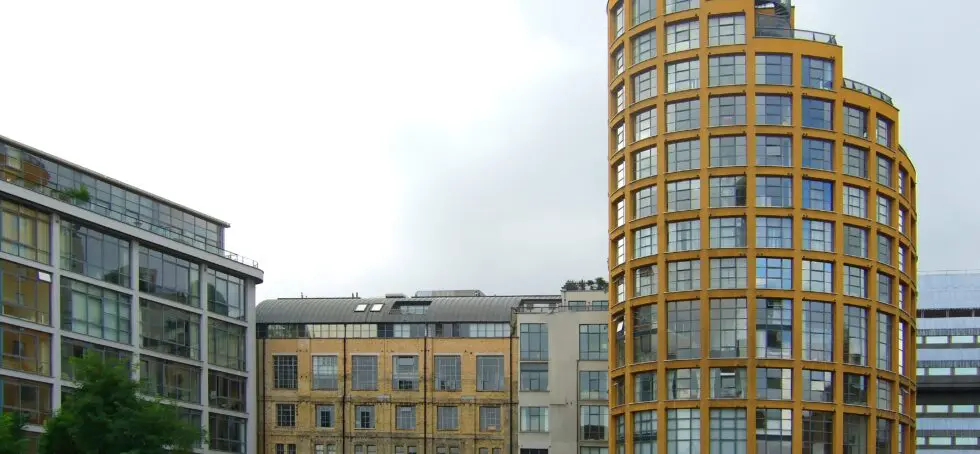A converted flat in a period home has been a feature of the UK housing stock for some time. But ‘office-to-resi’ conversions have become more widespread since 2013 when the government incentivised them with a change to permitted development rights. That has meant that rather than having to gain full planning permission, developers only needed to secure ‘Prior Approval’ – a light touch alternative to full planning permission.
The conversion of redundant offices, retail and industrial buildings into residential homes seems like a good idea in principle: making use of unused buildings to provide much needed housing in urban areas.
However, the change in rules since 2013 meant relying heavily on developers to act responsibly. Many developers have, but too many haven’t. The worst examples have often resulted in tiny flats. 13m2 (the size of a typical double bedroom) has not been unusual, and a few have been just 8m2 (the size of a typical child’s bedroom). Some homes have even been without daylight.
This means buyers of converted flats from offices really need to beware.
Office conversion to residential: government changes
Following widespread press coverage, and a damning independent report commissioned by the then Secretary of State, the late James Brokenshire, the government was forced to concede that some of these converted flats were unacceptable.
In 2020 it introduced a law requiring that all habitable rooms in office conversion to residential homes must receive daylight. Under pressure again (as it became clear that some of the smallest flats would be deemed ‘unfit for human habitation’ if tested in court), in September 2020, the government ruled that from 6 April 2021 all new permitted development right conversions would have to meet the Nationally Described Space Standard (NDSS). That means that the total internal floor area of any future office to resi converted flat must be at least 37m2.
Buying an “office to resi” converted flat
Julia Park, architect and Head of Housing Research at Levitt Bernstein, explained to us that while government changes have addressed the issue of space and light, these converted flats still have significant issues. The government has also extended permitted development rights to the high street. Most shops takeaways and restaurants, and many other ‘community buildings’ such as gyms and dry cleaners, can now be converted to housing without planning permission.
Very few of these conversions have any private or shared outside space (something that has become even more important since COVID) resulting in many people, including families, having to spend lockdowns at home without even a balcony. Some are located on very noisy and polluted streets and others on business parks, sometimes miles from shops and schools.
Since space standards were applied the number of office-to-residential conversions achieved has dropped substantially, but it’s difficult to know how much of this is due to the new space rules, how much to COVID, and how much to the fact that the ‘easy wins’ (the cheapest, most run-down office buildings) have already been converted.
The message to would-be purchasers is think carefully. Confront the reality of living in a shop window or a converted office block, ask yourself how secure you will feel and how much of the space is liveable, as well as what goes on either side, behind and above you.
The pros of “office to resi” converted flats
For buyers and renters, the main attraction is the price. Converted flats are often the cheapest homes available in any given area. Buyers are also attracted to the new furnishings and fittings.
The cons of converted flats
- Size. There will be existing flats built prior to April 2021 that fall short of existing standards. Flats in former office buildings are often considerably smaller than the 37 square metres (m2) minimum set by the standard. Studio flats are therefore very common. While most are around 20-25m2, a 13m2 flat (the area of a typical double bedroom) is not uncommon. Some are even smaller.
- Limited mortgage options. Many lenders are unlikely to lend on homes less than 30m2 and some now make 37m2 their threshold.
- Leaseholder restrictions. As is the case when buying a new build, buyers need to look carefully at the details including the length and terms of the lease, service charges, metering arrangements, council tax – and ensure their conveyancing solicitor can confirm that Building Regulations have been formally signed off.
- Location. Offices are often on busy roads or in light industrial parks – check out the traffic noise and intensity on different days of the week and at different times of day, including rush hour. Offices were often built around the car; it was assumed that everyone would just drive to work and back. Where are the nearest pubs, cafes and parks? Is there a sense of community and does it feel safe?
- Living on a high street. Unless protected by an ‘Article 4 Direction’ most shops takeaways and restaurants, and many other ‘community buildings’ such as gyms and dry cleaners, can now be converted to housing without planning permission. Shops are often hard on the edge of busy pavements and typically have very large doors and windows on the front, but little or no daylight in the middle or at the back. This results in little or no privacy.
- The condition of the building. External changes are not permitted under permitted development rights. Many office buildings date back to the 1960’s when external cladding panels started to become the norm. If the building you’re looking at has panels get written assurance that they are safe. Check out the windows too; they may be in poor condition – possibly only single glazed or with limited opening lights. Offices often rely on air conditioning; if the air-con units are still there, it’s bad news for the planet, but if they’ve been removed, summer overheating is a serious risk, particularly in south or west facing flats. Shops are even more prone to summer overheating and winter cold because of the large amount of glazing.
- Repair bills. If the building looks run down, you could be faced with a bill for repairs within a few years – will you see that money back when you move on? On the other hand, if it’s left to deteriorate further, it might be difficult to sell at all.
- Value for money. Don’t trust photographs or visualisations; make sure you visit. Compare the room sizes and proportions with spaces you know well. Establish the total floor area of the flat you’re interested in and work out the cost per m2 on the asking price. If it’s very small, calculate the cost per m2 of larger flats for sale in the area; the difference may surprise you.
- Liveability. When does ‘compact’ become ‘claustrophobic’? Lockdown was hard for all of us, but much harder for people in small flats or studios; particularly those without a balcony. Can you put up with shoppers peering into your home? Home-working is here to stay; will the ex-office space you’re looking at, work for you? Will your stuff fit, is there enough storage space for the main spaces to stay clutter-free, and, if it’s a studio, can you cope with your bed and your kitchen being in the same space? Check out the internal soundproofing too – it’s often not as good as it should be.
Finally, the law recognises that very small homes can be dangerous to our health and wellbeing. It’s much less obvious than the risk from fire, for example, but it can be just as devastating. Councils have powers to inspect a home that may be unsafe, and in the most extreme cases, they have a duty to take enforcement action. Take a look at the ‘Homes (Fitness for Human Habitation Act) 2018’ and mention it to your solicitor if you are concerned.
Have you had experience with buying a converted office space? Let us know your thoughts in the comments below








